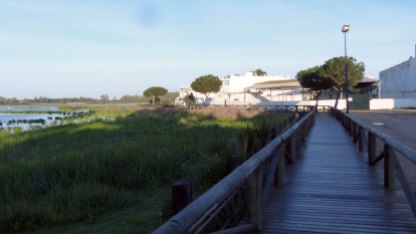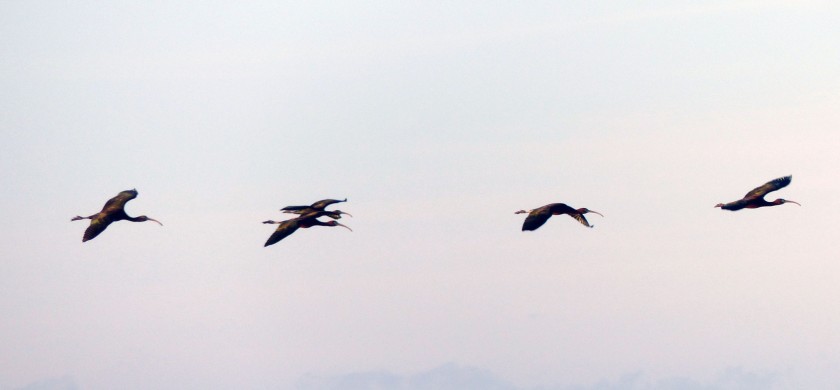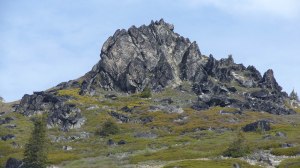I’m back in Ontario, hoping to catch the spring migration, to see the eastern birds I’d otherwise miss. I’m starting at Point Pelee, the southernmost point in Canada (if you don’t count Pelee Island and, I believe, a few other dots in Lake Erie).

Point Pelee is a major birding site because it’s the first land birds crossing the Lake encounter. After flying all night, they have to touch down here to rest and feed. Many will lift off once darkness falls and head for northern forests to stake out territories and start breeding. When conditions are right, the woods can be teeming with birds, using the word teeming somewhat loosely. Lots of birds anyway.Turkey’s don’t migrate so they’re always here. Now is the time for gobblers to strut their stuff, hoping to entice the seemingly oblivious hens.

My brother has decided to join me. He’s a sommelier not a birder. Still, having a wine guy around for a few days ain’t all bad. Until he gets here, I bird alone. Like most birders, I don’t mind that, for a time anyway.

Spring here has been cool and I realize immediately that maybe I’m a week early. Mornings are positively frigid and, aside from the turkeys, not much is moving around. The little trolley train that takes us to the Point might as well be taking us to look for polar bears, it’s that cold. Happily, the air begins to warm as the sun rises higher and, i think, the wind had shifted so that it’s now coming from the south. I won’t need to buy gloves after all.
The warblers have been waiting for this too. I glimpse movement and spot a beautiful Black and White Warbler, moving Nuthatch-like around a tree trunk and then the trees low branches. It’s my first Ontario warbler of the year and it’s a beaut.

I hop off the tram and head down a trail. As the temperature climbs more birds appear. Yellow Warblers are suddenly everywhere, calling from almost every other bush – sweet, sweet, sweet, I’m so sweet.

I’m still convinced I’m a week early. I see a couple of Nashville Warblers and a few other birds but the other warblers and the Orioles, Thrashers, and the like are scarce. I stop for lunch, in this case a huge donut and a coffee and then head out to the Point again. Hope springs eternal!

I arrive in time to see a flock of 50 or so Black-bellied Plovers wheeling around trying to touch down on the small triangle of exposed sand. For some reason, the fact that these birds are desperate to land hasn’t occurred to the group of photographers waiting for this to happen, standing ten feet from the spot. No way these birds are going to land. I back off down the trail. The birds fly by me as I go, still looking to touch down somewhere. I get some great shots and I’m not anywhere near the landing pad.
I’m considerably warmer than I was but I’m beat. I’m learning that donuts don’t have much nutritional value no matter how big they are. My brother is due in and we’ve planned dinner together. Steve’s a thrift shop type of guy (and proudly so) and i have no idea how he’s going to be equipped. With a superb bottle of wine, I hope.











































